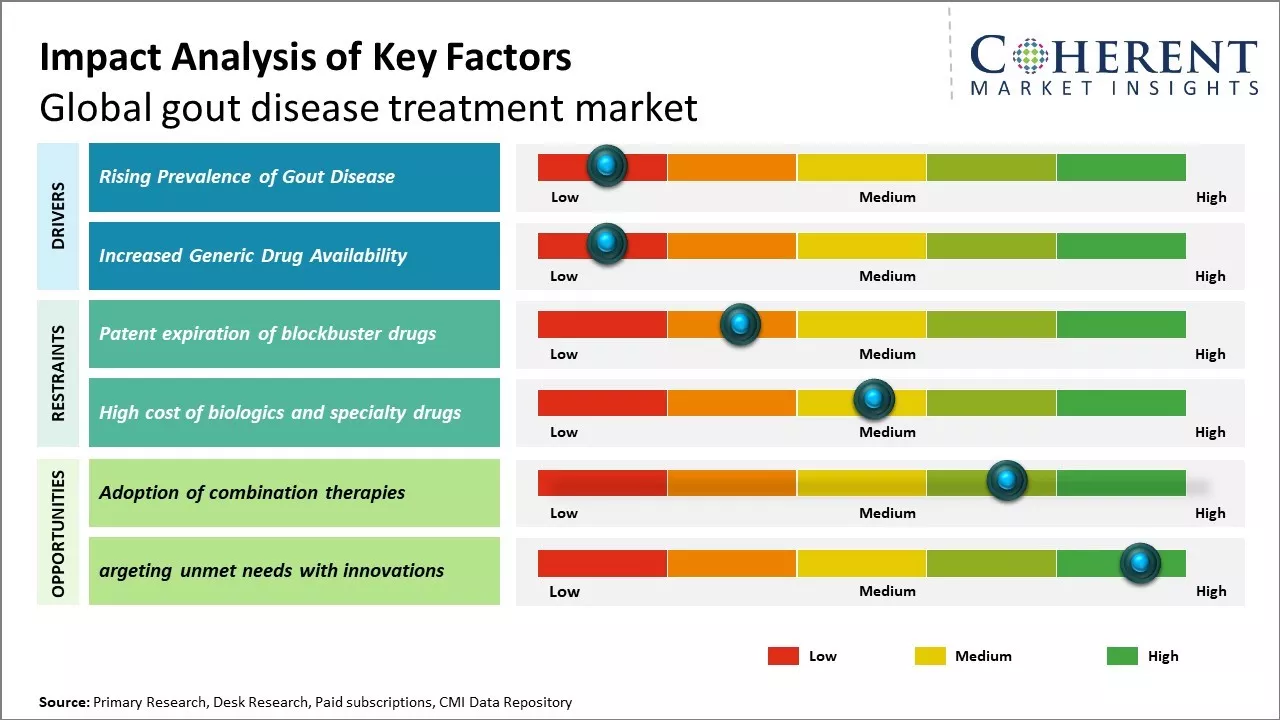Global gout disease treatment market is estimated to be valued at USD 3.04 Bn in 2025 and is expected to reach USD 5.32 Bn by 2032, exhibiting a compound annual growth rate (CAGR) of 8.3% from 2025 to 2032.

To learn more about this report, Request sample copy
The market is expected to witness positive growth over the forecast period due to factors such as growing geriatric population that are more prone to gout disease, increasing awareness about the disease, and availability of various treatment options. However, stringent regulations for new drug development and side effects associated with existing drugs can hamper the market growth. Key market players are focusing on new product innovations and launches to strengthen their market position. For instance, in 2021, Horizon Therapeutics plc received U.S. Food and Drug Administration (FDA) approval for KRYSTEXXA for treatment of chronic gout in adult patients.
Rising Prevalence of Gout Disease
Gout disease is increasingly becoming prevalent across the global population. This chronic inflammatory arthritis condition is being influenced by various lifestyle and dietary factors. The consumption of purine-rich foods like meat, seafood and alcohol is known to elevate uric acid levels in the bloodstream and contribute to the onset of gout attacks. Changing dietary habits, excessive weight gain and physical inactivity have made many individuals prone to developing hyperuricemia and gout. The gout prevalence is particularly higher in developed Western nations where people adopt sedentary urban lifestyles and consume greater amounts of purine-rich animal protein sources. Higher life expectancy globally also contribute to rising gout prevalence.. Genetic predisposition along with age-related decline in kidney function further raises uric acid levels in many older individuals. Their compromised immune systems make them susceptible to frequent gout flares. The disease burden has been escalating not nly in developed regions but also in emerging nations undergoing rapid economic development and lifestyle transition. Greater awareness along with improved diagnosis has additionally contributed to higher gout patient rates worldwide in recent times. For instance, in June 2021, according to a article published by Annals of Rheumatic Diseases titled 'Has the gout epidemic peaked in the UK?,' the prevalence of gout had increased from 0.98% in 1997 to 2.33% in 2021. The incidence of gout had also increased by 0.98 per 1,000 persons in 2021. This significant burden of gout can boost demand for medications treating this condition, thus, driving the market growth.
Joining thousands of companies around the world committed to making the Excellent Business Solutions.
View All Our Clients